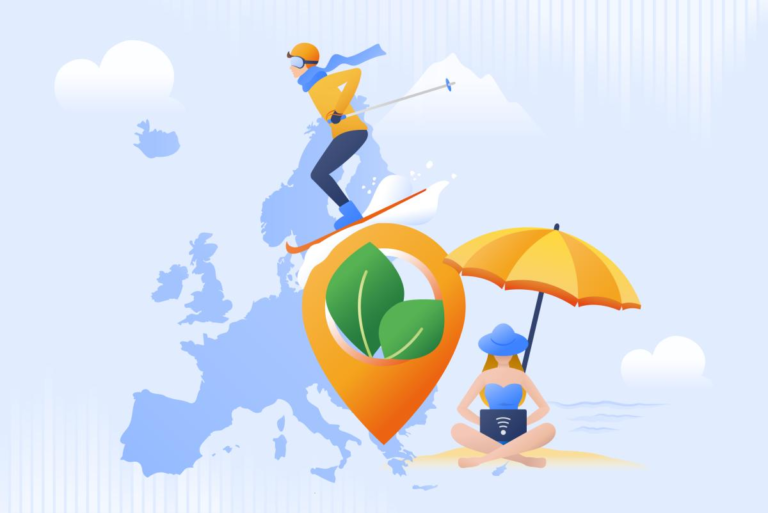According to the latest statistics on EU tourism, tourism demand in 2022 is already close to 96% of 2019 levels. This represents an almost complete recovery on average across the EU, with countries such as Belgium, Denmark, France, Ireland and the Netherlands even exceeding it. pre-pandemic levels.
However, the recovery in Eastern European tourist destinations has been slower, perhaps due in part to the Ukraine war. The data also shows that international tourism demand will recover more slowly than domestic tourism, remaining at 91% of 2019 levels in 2022.
These new figures come from an update to the EU Tourism Dashboard, an interactive tool that provides statistics and indicators related to tourism policy. These include the environmental and socio-economic impacts in a particular region, the level of digitalization, the main tourism typologies, etc.
Recent upgrades have brought updated figures and new indicators on the adoption of environmental labels and schemes by tourist accommodation, opportunities for nature-based tourism and the economic impact of tourism.
Greener and digital tourism in the EU
New data shows that in terms of digitalisation, internet infrastructure continues to improve and internet speeds covering tourist destinations continue to increase. In 2019, only 10% of tourists had an internet speed of more than 100 Mb/s. This improved to 42% and 63% in 2021 and 2023, respectively.
On the environmental protection front, around 850 tourist accommodations received the EU ecolabel or were registered with the EU Eco-Management and Audit Scheme (EMAS) in 2022. The EU Tourism Dashboard also identifies 4,750 other tourist accommodations in EU member states, Switzerland, Iceland and Norway that have other reliable environmental labels and schemes.
However, this number is still only a fraction of the approximately 650,000 tourist accommodation facilities in these countries.
Better data to design policies for more sustainable tourism
The new data collected and provided in the upgraded dashboard will help decision makers identify vulnerabilities and opportunities and make the EU tourism ecosystem more sustainable, for example by further encouraging the adoption of reliable environmental labels. It further helps in designing effective strategies to strengthen against possible and possible shocks. Schemes by tourist accommodation facilities, etc.
The EU Tourism Dashboard provides policy makers in EU countries and regions with an opportunity to better understand how tourism is progressing towards a green and digital transition and to assess the region’s socio-economic resilience. It is a valuable source of knowledge. You can also contribute to the work of statisticians and researchers in EU countries, as well as public and private operators promoting local and regional tourism.
The indicators on the dashboard are organized around three main policy pillars: green, digital and socio-economic. The dashboard also includes tourism demand and supply descriptors such as occupancy, average length of stay, and presence of UNESCO World Heritage Sites.
background
The EU Tourism Dashboard, launched in October 2022, follows a request from the JRC and the European Commission to design a tool to monitor twin migration and tourism from EU member states in 2021. Family Spirit, developed by the Directorate General of Small and Medium Enterprises. Resilience of the tourism ecosystem – one of the ecosystems most affected by travel and health restrictions introduced during the COVID-19 pandemic. The dashboard was developed in cooperation with Eurostat and his EU member states.
This initiative will contribute to the “Transition Pathways for Tourism” published in February 2022. The pathway has been developed in collaboration with public and private EU tourism stakeholders and identifies 27 areas of action towards the green and digital transition and improving the resilience of EU tourism. Improving statistics and measurement of the economic, environmental and social impacts of tourism was identified as one of the key themes for action.

